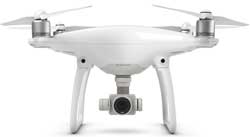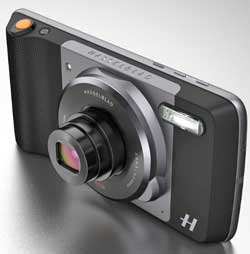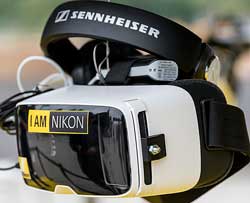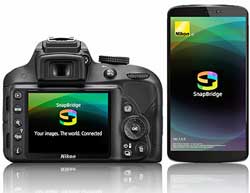GfK Europe ran three presentations over three days at Photokina where it shared some trends for the worldwide market thus far in 2016.
In value, sadly DSLR is down 20 percent. High Value CSC/Mirrorless is flat, as are travel zoom and premium compacts. Point-and-shoot is down another 35 percent!
The worldwide value mix, which is only slightly different in Australia, showed:
DSLR – 49 percent
Mirrorless – 21 percent
Travel Zoom – 3 percent
Premium Compact – 7 percent
Point and Shoot – 20 percent
The German photo trade association, Photoindustrie-Verband (PIV), published an overview of the global photo industry which was considerably more positive than the current state of the retail camera market might indicate. Here is a slightly abridged version of the PIV ‘world view’:
The Digital Transformation
Imaging is further expanding its radius as a key technology. Even now, it can be found in all areas of daily life: in science, in medicine and technology as well as in industrial production.
 With the digital transformation, the imaging ecosystem and its players are increasingly transforming from hardware to software and services specialists. In both the B2C and B2B sectors, the photography and imaging sector is booming with new trends such as virtual reality (VR), augmented reality (AR), cloud, connectivity, multicopter, apps, security systems and industrial robots.
With the digital transformation, the imaging ecosystem and its players are increasingly transforming from hardware to software and services specialists. In both the B2C and B2B sectors, the photography and imaging sector is booming with new trends such as virtual reality (VR), augmented reality (AR), cloud, connectivity, multicopter, apps, security systems and industrial robots.
Infotrends expects 1.138 trillion more saved images by consumers worldwide in 2016. Brandwatch reports that 350 million photos on Facebook, 95 million on Instagram,
400 million on Snapchat and 1.6 billion via WhatsApp are shared around the globe every day. More than ever, images are an obvious means of communication that enriches life in everyday situations.
Media and analysts prefer to report on the declining sales of cameras and accessories like camera bags, flash devices and interchangeable lenses. However, this only paints a partial picture of the imaging industry’s sustainability, which is changing into a smart imaging world. The imaging industry’s portfolio gains enormous variety through

this digital transformation. This requires rapid innovation and adaptability in order to set new trends and be able to accompany them. The industry is moving away from pure hardware suppliers towards software and service-based suppliers as well as to completely new applications and business models.
The photo and imaging industry has always been rooted in the technology field and it is developing more and more towards networked high-tech products. The photography and imaging sector is currently showing that it is able to actively shape this change; on the one hand through new trendy products and on the other hand, through cooperation with technology suppliers from completely new areas. Accordingly, the future prospects for the industry are diverse and promising.
Image recording devices – It is all about the eyes
The variety of image recording devices is increasing in both the B2C and in the B2B sectors; they form the basis for every conceivable application in the imaging ecosystem. The smartphone market is still at a high level globally, whereas tablets are declining slightly. Both devices generate important market impulses beyond their receiving units. In addition, they have increased the omnipresence of photos and videos as an integral part of any communication.

Currently capturing the headlines are 360-degrees-cameras from the B2C sector, supported by the virtual reality hype. Bodycams represent a relatively new camera category, with which police officers and security personnel are increasingly being equipped. The market will further increase in momentum in the coming years. IHS (Information Handling Services) estimates worldwide sales in 2016 at 135,000 units. Dashcams are very similar to bodycams and are also a growing market. GfK is forecasting sales of 2 million dashcams for Europe at a current turnover of 150 million euros a year.
The market for actioncams is at a high level with a continued slightly rising sales curve typical for product cycles. GfK is forecasting sales of 10.5 million units worldwide and sales of 670,000 cameras for Germany in 2016. Whether the boom surrounding action cameras will continue at that rate in the next few years depends on future innovation, but also on the accessories available.
The Kumamoto Earthquake on April 14 has influenced the market trend for compact, SLR and compact system cameras in 2016; the direct results are still a shortage of goods. Even if the situation slowly normalises and production starts again, the demand still cannot be fully met. In addition, the earthquake has delayed the launch of innovations, which has had further influence on market development in 2016.
Understanding that there are supply shortages, not much advertising was done on the market, so as not to generate a demand which might not be fillable. The declines triggered by the earthquake cannot be compensated by the end of the year based on the current assessment. At the global level, all three segments show higher percentage declines than in their value. Considering Germany, the declines lie both in quantity and in value in the compact and SLR camera segments, while sales of compact system cameras is stable.
VR and AR
Virtual reality (VR) is the trend topic of the imaging industry with an increasing number of people immersing themselves in artificial virtual worlds. IDC (International Data Corporation) forecasts that global sales of VR headsets at 9.6 million in 2016 will increase to 64.8 million in 2020. With the proliferation of VR goggles, the supply of hardware and software is growing. Almost daily, manufacturers announce new headsets, cameras such as new 360-degree models, games, features and applications. Soon VR will be firmly anchored in many photographer and filmmaker’s repertoire.

Unlike with VR goggles, augmented reality (AR) users do not dive into artificial worlds with their entire field of vision. Instead, they look at their environment through a smartphone camera, which provides useful computer data through a lens or a windscreen. Up until now, data goggles for AR applications have been a niche segment but currently the technology seems ready for a breakthrough onto the mass market.
In 2016, 400,000 AR headsets are estimated to be shipped worldwide and it is likely to be 45.6 million units in four years (IDC, April 2016). Because the partially translucent AR hardware is more flexible in more areas than the fully wired VR headsets, augmented reality could become a more significant product economically. Digi-Capital (January 2016) predicts global revenues of US$90 billion in augmented reality by 2020, while an estimated 30 billion US dollars in turnover is predicted for virtual reality. One argument for the future wider distribution of AR is the fact that the technological infrastructure already exists in most households. Many AR applications games can already be run on commercial smartphones without data goggles. This explains the enormous success of Pokémon Go, an augmented reality based games-app.
Photo and Video Apps
Photo and video apps have their place in the app economy and guarantee added value in the entire imaging workflow (processing, storage, output). Consumers can find a growing range of photo and video apps and AR imaging apps relevant to everyday life that are gaining in importance. Accordingly, the distribution of applications, content and services in app form is a sustainable and attractive market. According to the market analysts of App Annie, this sector had a worldwide turnover of US$41.1 billion in 2015 and it is estimated at US$50.9 billion in the current Photokina year. App Annie predicted (February 2016) that by the end of the decade, this figure will double. The demand for mobile apps is also rapidly increasing in Germany. According to Bitkom and research2guidance (August 2015), the local (German) market is likely to have cracked the billion mark last year. Applications for photos and videos have a firm place in the app economy. PocketGamer assigned around 53,000 apps (June 2016) to this category in the Apple App Store and AppBrain counted more than 39,000 (July 2016) on Google Play.
The Cloud
How intermeshed the individual imaging segments are today can be seen in the cloud, not only associated with app connections. Editing, sorting and archiving mainly photos through the cloud has become common practice. Efficient workflows through networking and intelligent solutions is a central theme in the imaging industry. More and more providers link recording devices, peripherals, software and Web services to an imaging ecosystem with infinite creative possibilities and their attention is focused on even more reliable data protection.
At the forefront of innovation with respect to the cloud are intelligent solutions with automation that will revolutionise the handling of image data with respect to their storage, processing, output and transfer. According to a Gartner study (January 2016), turnover of cloud services will reach about US$203 billion from business and private customers in 2016. Thus, business has more than doubled within five years.
Connectivity
Connectivity – the spark has jumped and not only is the networked camera a reality, but more and more devices from printers to televisions are connected wirelessly. Accordingly across all camera categories, more and more models are now equipped with Wi-Fi for the wireless transfer of files and control signals. According to GfK, the market penetration is increasing rapidly.

In 2012, when smart cameras first aroused wide interest, only three percent of all commercial models available (Germany) had wireless capability, mid-2016 there are already nearly 40 percent. However, the proportion of networked cameras is considerably higher. If it does not have an integrated wireless module, it can be networked using a wireless-enabled memory card. Connectivity allows the technical worlds to grow together, influences the development of the market segments concerned and expands the options without limit.
With the development of yet more intuitive methods for image transfer, the imaging industry is continuing to drive the connectivity issue actively, creating smart solutions with added value and thereby continually providing new incentives to buy. In addition to networking with smartphones and tablets, the integration of cameras in the smart home will gain even more importance in the future.
‘Multicopter’
Currently drones are giving the B2B business in particular some tailwind. The model variety includes small to large, with or without a camera, as a complete system or as a kit, for above and/or below water; the variety is as enormously diverse as the sales channels, which makes accurate market analysis more difficult. The number of models produced for civil and commercial purposes has more than tripled between 2010 and 2016, from 171 to 561 models, according to the producers’ association UVS International.
Already rotor-powered drones, called multicopters, are used in a wide range of applications especially in aerial photography. According to the German Federal Association Copter Pilots (BVCP) 400,000 UAV (Unmanned Aerial Vehicle) are in the air in this country. Including many in the hands of consumers. Despite the existing hype, this product category is only at the beginning of its life cycle and has great growth potential. According to the research firm Markets and Markets worldwide sales of multicopters will multiply to US$5.6 billion by the end of the decade, with an annual growth rate of 35 percent between 2015 and 2020. While in the current phase, camera and lens manufacturers are involved in the recovery, in the next step, a major boost is expected in accessories and image output – just in terms of 4K screens and VR headsets.





Be First to Comment